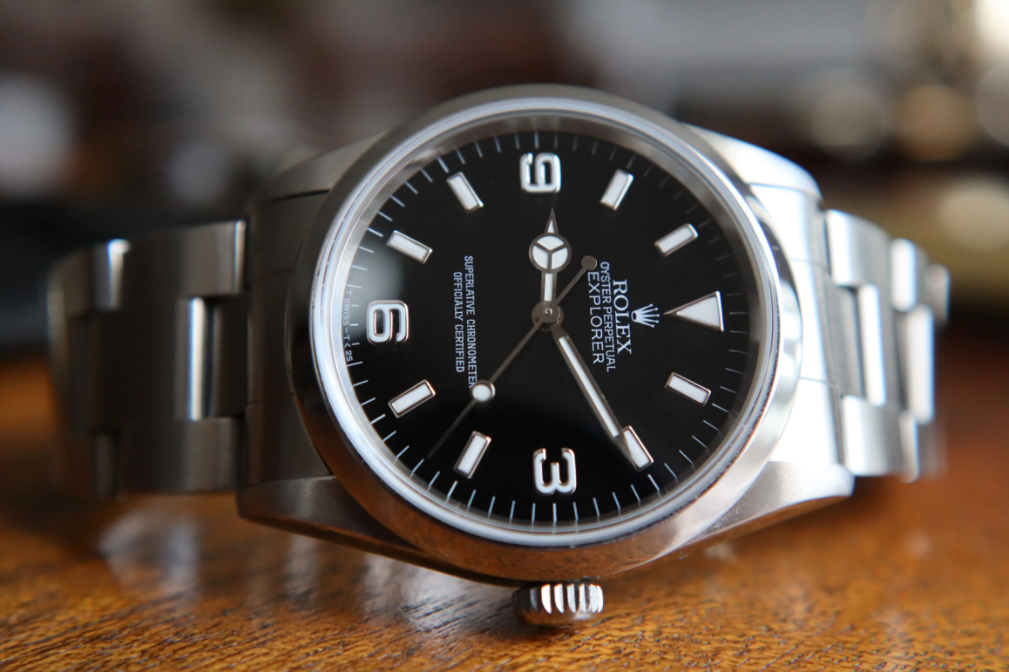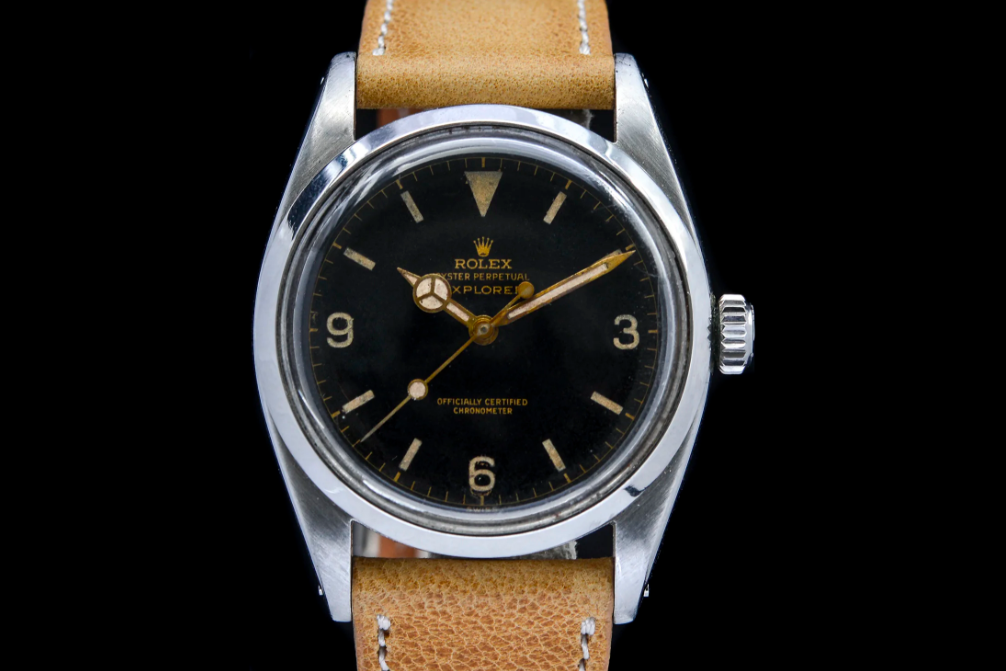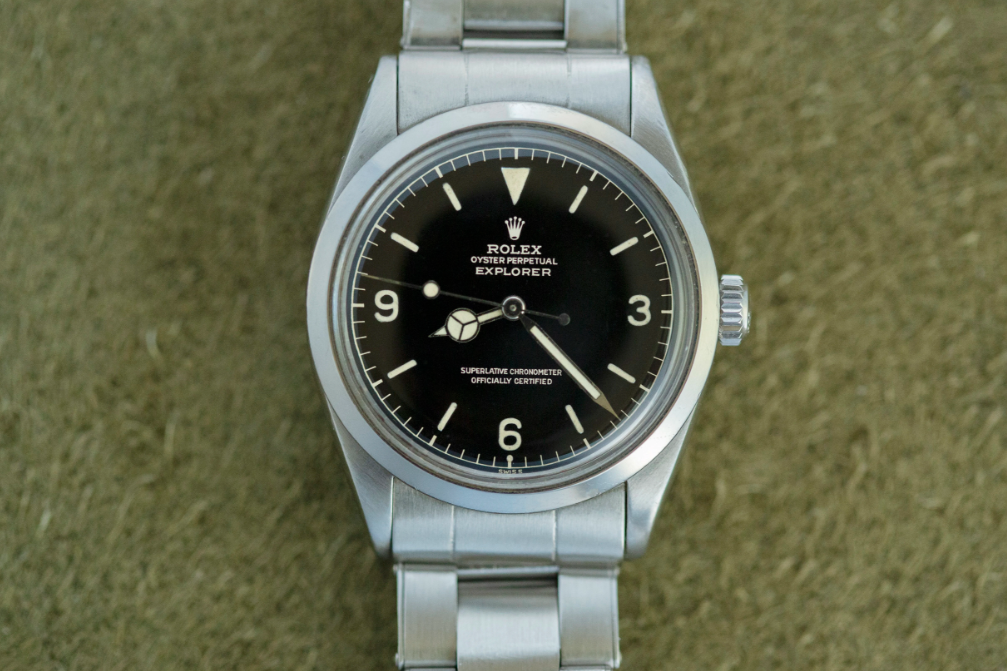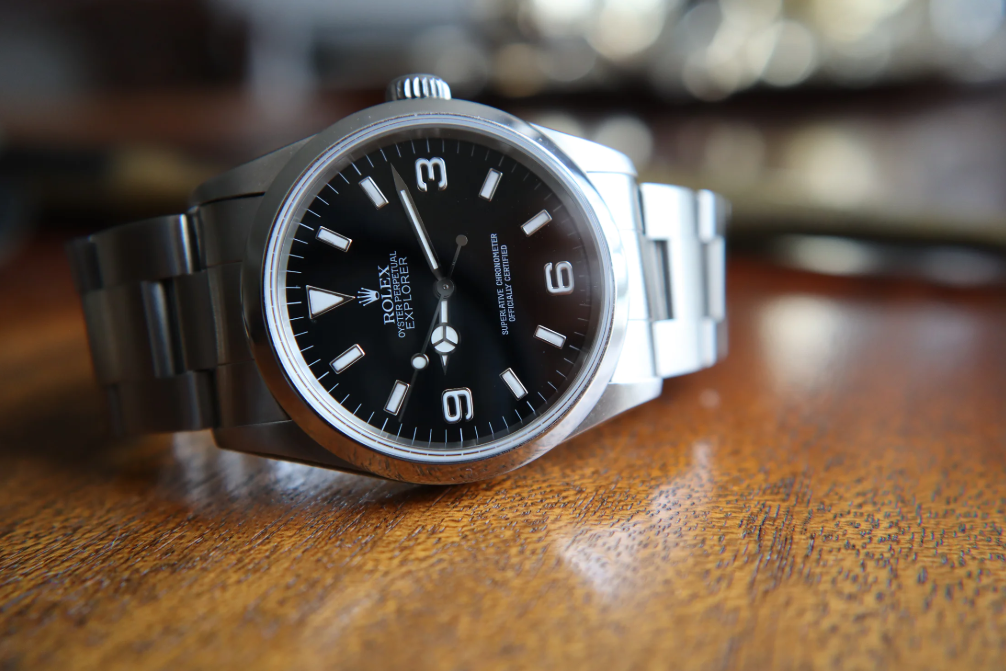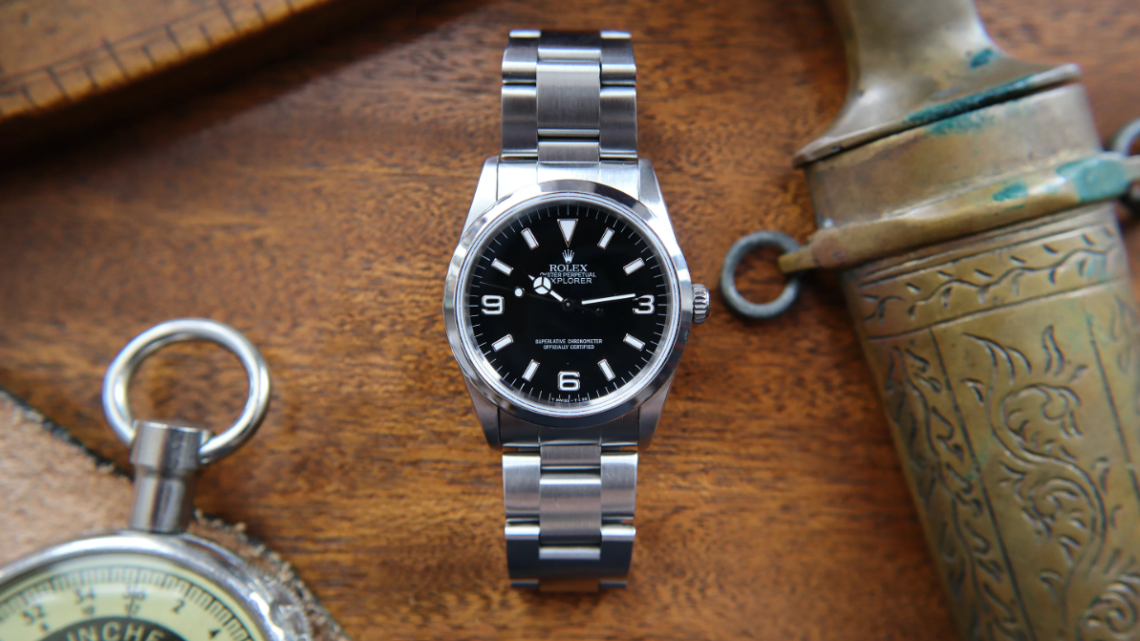
Everything You Need To Know About The Fake Rolex Explorer Ref. 14270
The Rolex Explorer 14270 holds an interesting place in horological history. Caught somewhere in wristwatch purgatory – not old enough to be vintage, and not new enough to be cool – it is a vastly under-appreciated timepiece in collecting circles, but one with a serious cult following amongst enthusiasts. It has the rare distinction of being, quite likely, the very first modern Rolex sports watch, ushering in a new era of watchmaking and watch design for the brand. The replica watches Explorer 14270 is a watch that is so simple in its execution that people just don’t talk about it. Well, with the 30th anniversary of its release having just passed, it is time to put the spotlight on this sleeping giant.
The Rolex Explorer, as an entire line, certainly needs no introduction, but let’s give it one anyway. Historically speaking, it embodies the brand’s gift for myth-making and marketing. It was the 1953 Mt. Everest expedition which led to its creation. Sir Edmund Hillary and Tenzing Norgay took with them a white Rolex Oyster Perpetual as they ascended Everest’s peak, a notoriously onerous and life-risking undertaking. Of course, the inclusion of a Rolex watch on that trip was not happenstance, but rather a purposeful branding exercise by Rolex to show just what the Oyster case was capable of. The white Rolex Oyster Perpetual Superlative Chronometer not only partook in the adventure, but returned home to tell the tale – which it has done for nearly 70 years since. This masterclass in brand building by Rolex resulted in the creation of a 36mm watch, similar in essence to the watch which summited Everest, but bearing the now-iconic name, “Explorer.”
It was also in 1953 that the Explorer reference 6350 was released. While not technically the first Explorer, it is the first to feature the Explorer name on the dial. Featuring Arabic numerals at 3, 6, and 9, a 36mm case size, and black dial, this watch was the foundation for the Explorer design language going forward. The 6350 has become known as the “honeycomb” due to the dial pattern which looks – you guessed it – like a honeycomb. This is an exceedingly rare watch, as it was produced for just about one year, and concurrently with its predecessor, the 6150. The 6150, and 6350 were succeeded by the 6610. That watch sported a matte black dial, gilt numerals, and a very familiar dial layout. The 6610 was the precursor to the longstanding 1016 which was then released in 1963. The 1016 lived a long enough production life – 27 years to be exact – to see a host of variations on its overall design. From the Albino dial, to the Space-Dweller, the stretch bracelet, the gilt underline, and the solid link bracelet, each one of these variations represents the elements that make watch collecting so endlessly fascinating.
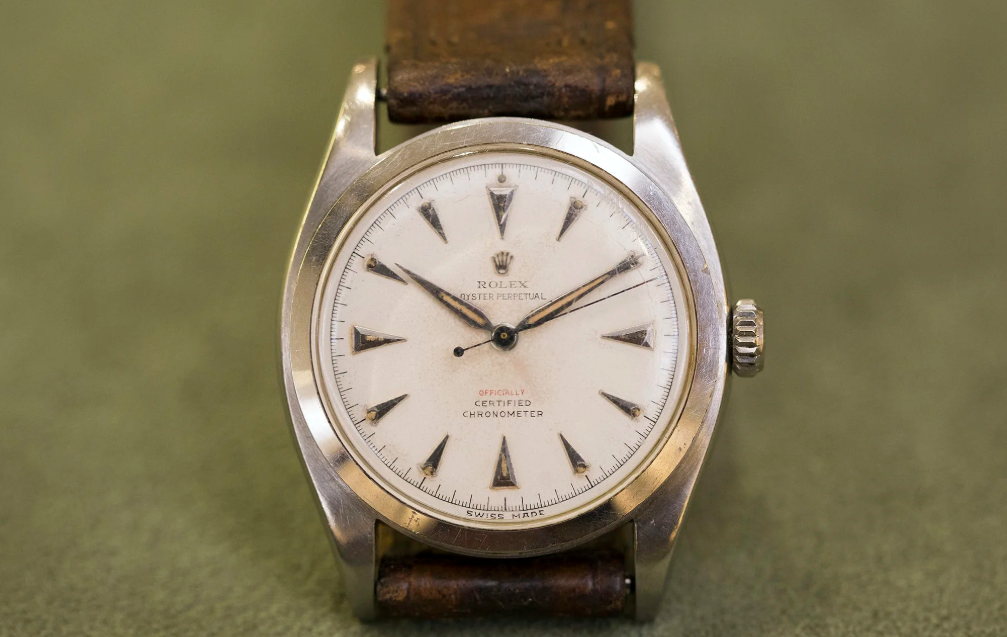
The white dial Rolex Oyster Perpetual which made the trip to Everest’s peak. This watch now sits in the Beyer Museum in Zürich, Switzerland.
The 1016 played an integral role in the legend of the Explorer. It gained considerable fame in literary circles, being a watch chosen by such major figures as Ian Fleming, William Gibson, and HODINKEE fan-favorite, Gary Shteyngart. The 1016 expanded the Explorer mythos and provided the foundation for all future Explorers. The 3-6-9 dial configuration, the triangular marker at twelve, the rectangular markers filling out every other hour, the Mercedes handset, and the “Explorer” mark were all 1016 staples that helped the little watch become a horological behemoth. But all things come to an end, and in 1989 (although the exact date is a little fuzzy), the 1016 gave way to the next generation.
Rebirth Of The Explorer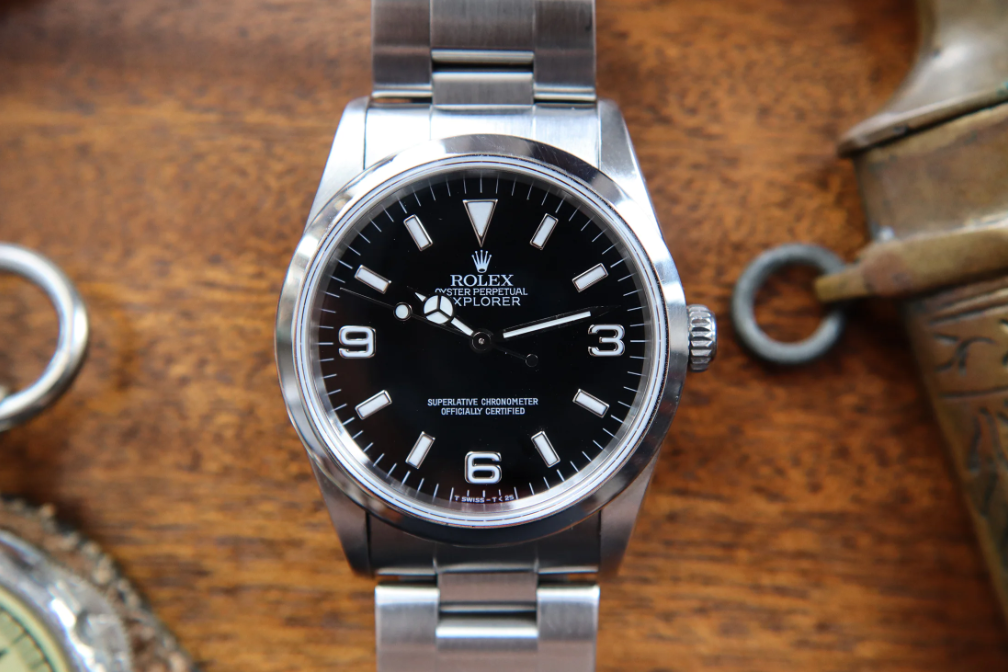
Enter the Rolex Explorer 14270, a watch that at one time was referred to as having “no horological interest whatsoever” by watch writer Walt Odets and the first Rolex ever purchased by Ben Clymer. The 14270 was released at the Basel Fair in 1989 and put Rolex at the cross-section of sport and luxury. The classic iteration of the tool watch was slowly being phased out as Rolex started integrating, little by little, various higher-end manufacturing techniques into their watches. It was at this time as well that other iconic tool watches were seeing design code changes. The Rolex Submariner, long-reigning king of the tool watch, saw its matte dial replaced with a glossy one and its rolex replica painted markers replaced with applied markers with white-gold surrounds. The 1980s were a time of change in a post-quartz-crisis world, as well as one of reinvention and forward-thinking. The vintage design trend was a long way off, and in any event, Rolex very rarely looks backwards.
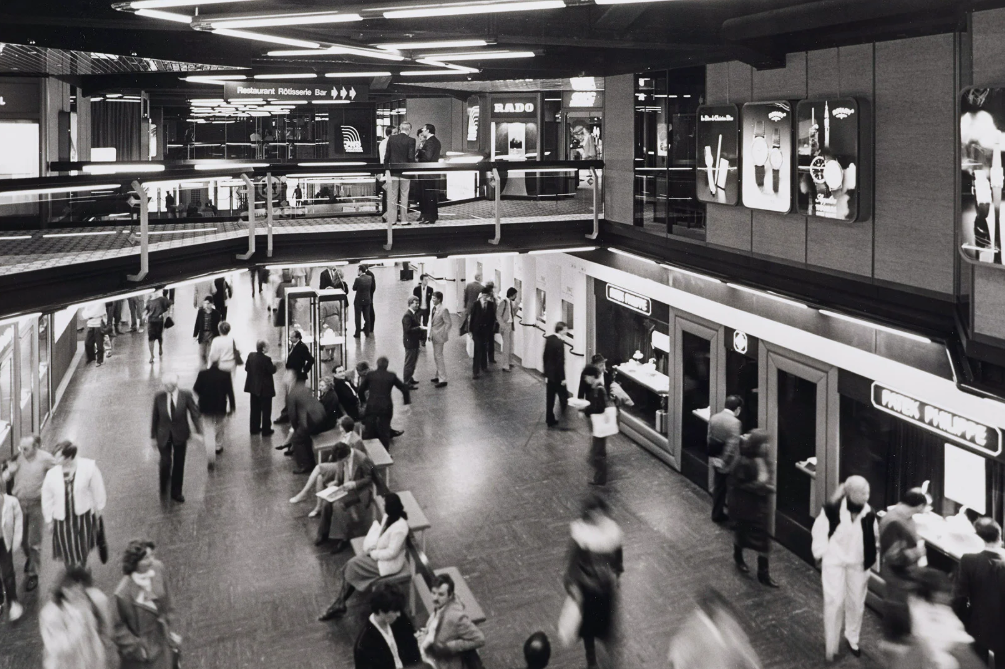
Photo of the Basel Fair from approximately 1986, which would have looked quite similar to the 1989 fair where the Explorer 14270 was released. Source: Baselworld
So what was the reaction to Rolex taking its most quintessential non-dive sports watch and making so many relatively subtle but fundamental design changes? When Rolex released the 14270, it was received with a certain amount of surprise by Rolex customers. Functionally the new watch was the same as its predecessor, but the dial had been given a pretty dramatic update and, of course, a new movement as well. For the next 11 years, Rolex continued to experiment with and refine various aspects of the design (and you could argue that they’re still doing that today).
But time heals all wounds, and the novelty has more than worn off. So much so that the Rolex Explorer 14270 is often considered to be a boring watch to the casual observer. As such, it is something of a sleeper in the collecting world. You’ve seen one, you’ve seen them all, right? Wrong. This sly fox of a watch has enough variations within its single reference to make it not only highly interesting, but also potentially quite collectible. There is always another door set to open in the world of horological intrigue. The first-ever modern Rolex, the 14270, might well be poised at the brink of icon status.
So let’s dive into every nook and cranny of this watch and uncover some of its hidden details.
